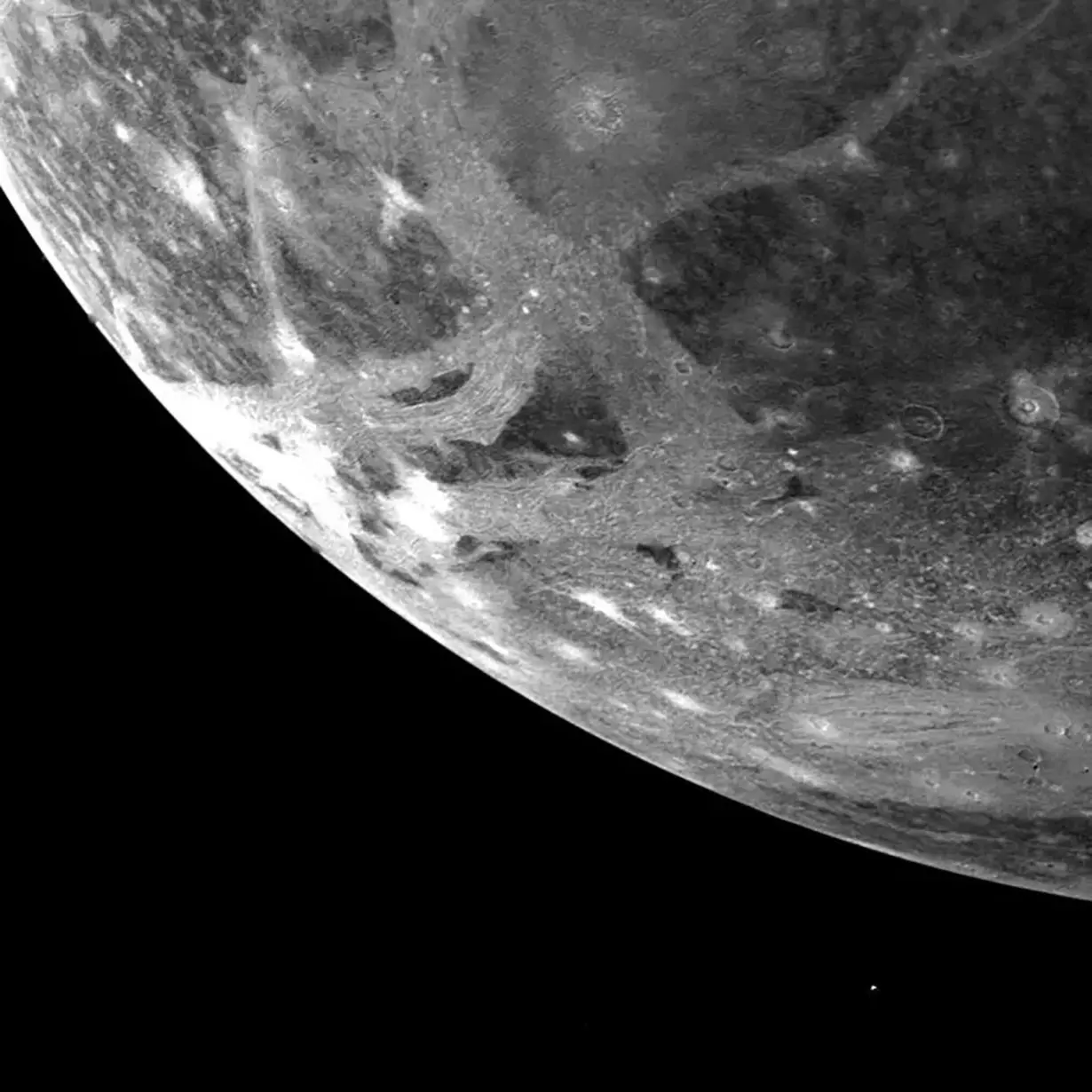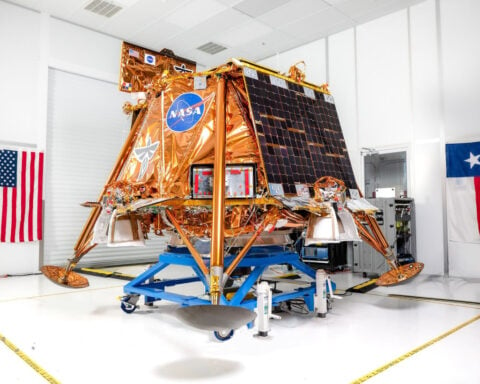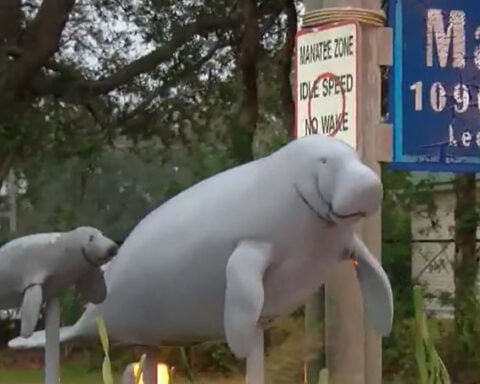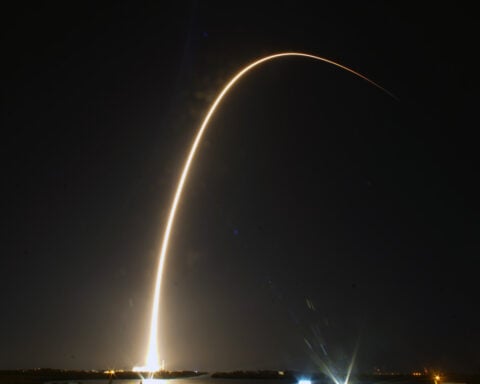(CNN) — Jupiter’s moon Ganymede may have shifted on its axis when a massive asteroid smashed into it about 4 billion years ago, according to a new study.
Ganymede, the largest moon in the solar system, is even bigger than Mercury and the dwarf planet Pluto. And past research has found evidence suggesting that beneath its thick, icy crust lies a salty ocean that is 10 times deeper than Earth’s oceans.
But many questions remain about the moon, and scientists need more high-resolution imagery of its surface to solve the mysteries surrounding Ganymede’s history and evolution.
Deep furrows cover large swaths of Ganymede’s surface, and they form a pattern of concentric circles around one spot that have led some astronomers to believe the moon experienced a major impact event in its past.
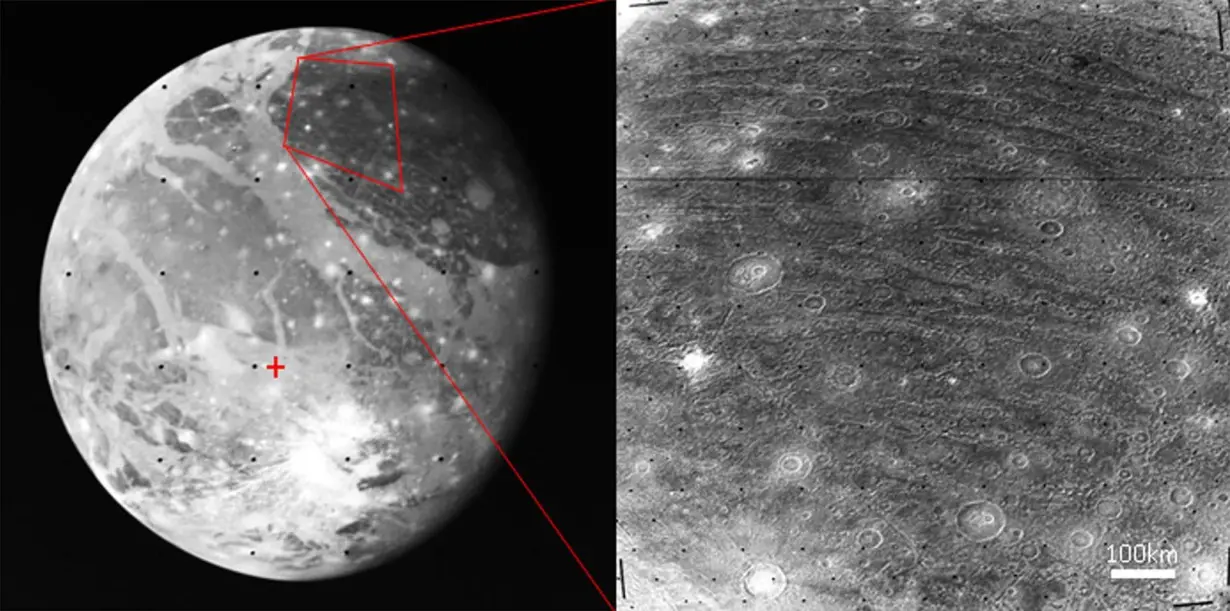
“The Jupiter moons Io, Europa, Ganymede and Callisto all have interesting individual characteristics, but the one that caught my attention was these furrows on Ganymede,” said Naoyuki Hirata, assistant professor of planetology at Kobe University in Japan, in a statement. “We know that this feature was created by an asteroid impact about 4 billion years ago, but we were unsure how big this impact was and what effect it had on the moon.”
Hirata is the author of a new study, published Tuesday in the journal Scientific Reports, that explores what created Ganymede’s system of furrows and the fallout of the impact — which could be investigated more closely by the European Space Agency’s Juice spacecraft, which is currently en route to study Jupiter and its moons.
An ancient impact
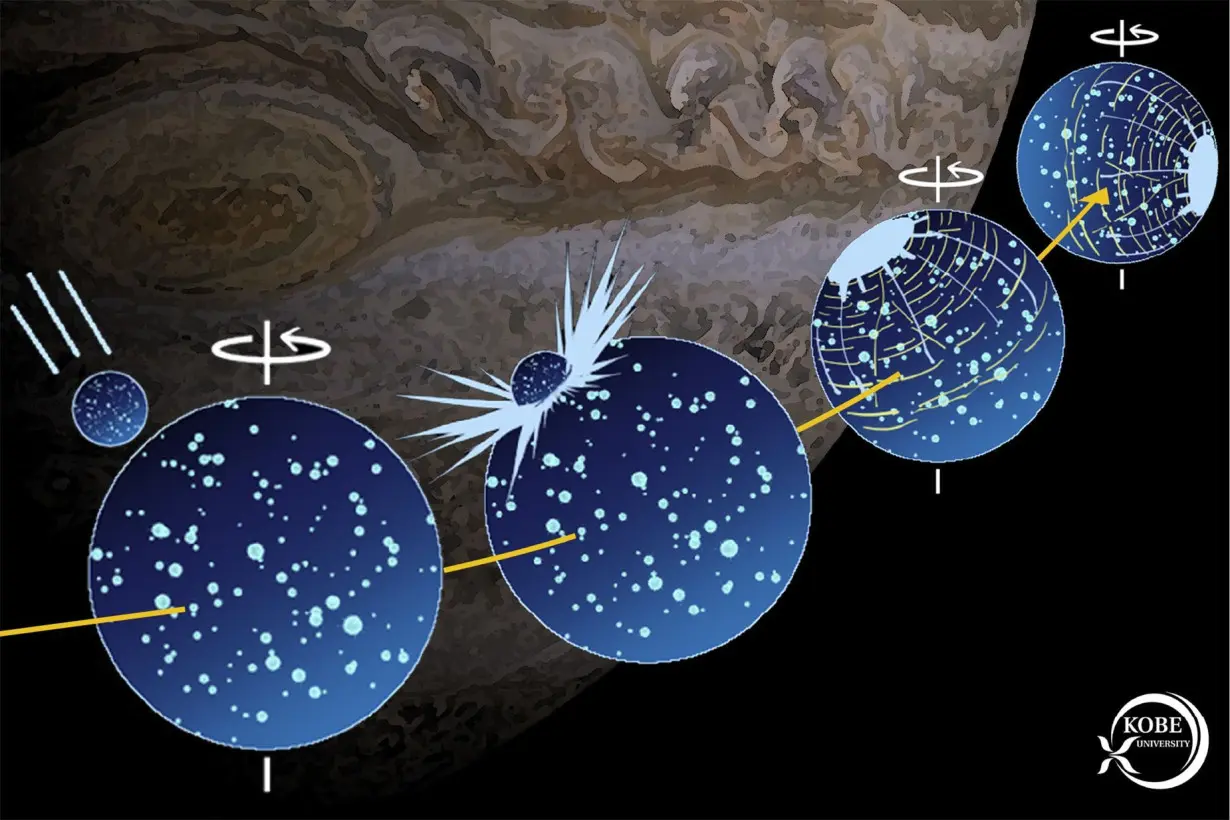
Ganymede has long intrigued Hirata, who said he believes uncovering its evolution is “meaningful.” The moon’s surface is a study in contrasts, with bright regions of ridges alongside grooves that cut across darker areas.
Hirata took a closer look at the system of furrows on Ganymede, which extend from a single point on the moon’s surface like the concentric cracks that form when a stone hits a car windshield, he said.
Hirata noticed that the central point of the furrow was along the moon’s rotational axis, which implied that something like a large impact event caused a complete reorientation of the moon.
Previous research suggested that a large planetary body collided with Pluto early in its history, which rearranged the distribution of ice on the dwarf planet and led to the creation of a distinctive “heart” on the planet’s surface. Hirata said he believes a similar scenario occurred on Ganymede, with its icy shell and subsurface ocean.
A sudden change in the way mass is distributed on a planet can shift the location of its axis, or the imaginary line around which planetary bodies rotate. When a large asteroid slams into a planet, it creates a gravity anomaly that changes the way a planet rotates. So Hirata calculated what kind of impact could have created Ganymede’s current orientation.
His equations revealed that an asteroid about 186 miles (300 kilometers) wide initially created a crater around 870 to 994 miles (1,400 to 1,600 kilometers) in diameter.
The asteroid was 20 times larger than the one that collided with what’s now the Yucatán Peninsula in Chicxulub, Mexico, and led to the downfall of dinosaurs on Earth 66 million years ago. The crater left behind on Ganymede was 25% the size of the Jupiter moon, according to the study.
Juice mission’s up-close investigation
It’s still unclear how much Ganymede’s axis shifted, Hirata said. But future data collected by the Juice mission, or Jupiter Icy Moons Explorer, could shed more light on Ganymede’s history and the impact event.
The spacecraft, launched in April 2023, completed a historic flyby of Earth and the moon on August 21 that has put it on track to reach Jupiter and its moons in 2031.
It’s difficult for researchers to know whether an ancient impact created the furrows on Ganymede without more data, which the Juice mission could provide, said Adeene Denton, postdoctoral researcher in the Lunar and Planetary Laboratory at the University of Arizona. She was not involved in Hirata’s study.
“This paper presents an interesting premise, with lots to think about for icy moon and ocean world evolution,” said Denton, who coauthored an April study covering the impacts on Pluto and its large basin, called Sputnik Planitia, which makes up the left lobe of the heart feature observed by astronomers.
“It’s worth noting that some skepticism can be warranted when considering ancient, degraded geologic features on planetary bodies and how they affect a planet’s orientation,” she said. “With so little information with these large, old features, it’s hard to be confident in the identification of this feature as a basin, as well as a potential mass anomaly. Luckily, unlike with Pluto and (Sputnik Planitia), we’re going back to Ganymede soon and can get the additional information needed to resolve this.”
Researchers believe that Ganymede’s interior may be like a club sandwich, stacked with alternating layers of ice and ocean. Understanding how the impact altered the moon could reveal insights into its intriguing internal structure, Hirata said.
“I want to understand the origin and evolution of Ganymede and other Jupiter moons,” he said. “The giant impact must have had a significant impact on the early evolution of Ganymede, but the thermal and structural effects of the impact on the interior of Ganymede have not yet been investigated at all. I believe that further research applying the internal evolution of ice moons could be carried out next.”
The-CNN-Wire
™ & © 2024 Cable News Network, Inc., a Warner Bros. Discovery Company. All rights reserved.

 India's navy launches submarine, warships to guard against China's presence in Indian Ocean
India's navy launches submarine, warships to guard against China's presence in Indian Ocean
 UK inflation unexpectedly eases in December, which could reduce pressure in bond markets
UK inflation unexpectedly eases in December, which could reduce pressure in bond markets
 Body count from South African mine siege rises to 60
Body count from South African mine siege rises to 60
 Question on ASEAN stumped Hegseth at Senate hearing. What is it and why is it important?
Question on ASEAN stumped Hegseth at Senate hearing. What is it and why is it important?
 US importers rush in goods from China as Trump tariff threat looms
US importers rush in goods from China as Trump tariff threat looms
 Novak Djokovic breaks a tie with Roger Federer for the most Grand Slam matches in tennis history
Novak Djokovic breaks a tie with Roger Federer for the most Grand Slam matches in tennis history
 China's RedNote: what you need to know about the app TikTok users are flocking to
China's RedNote: what you need to know about the app TikTok users are flocking to
 British author Neil Gaiman denies ever engaging in non-consensual sex as more accusers come forward
British author Neil Gaiman denies ever engaging in non-consensual sex as more accusers come forward
